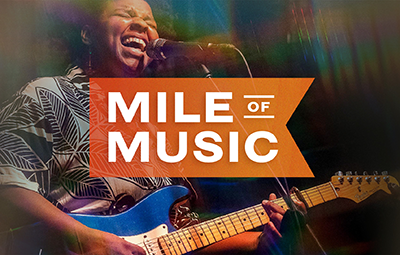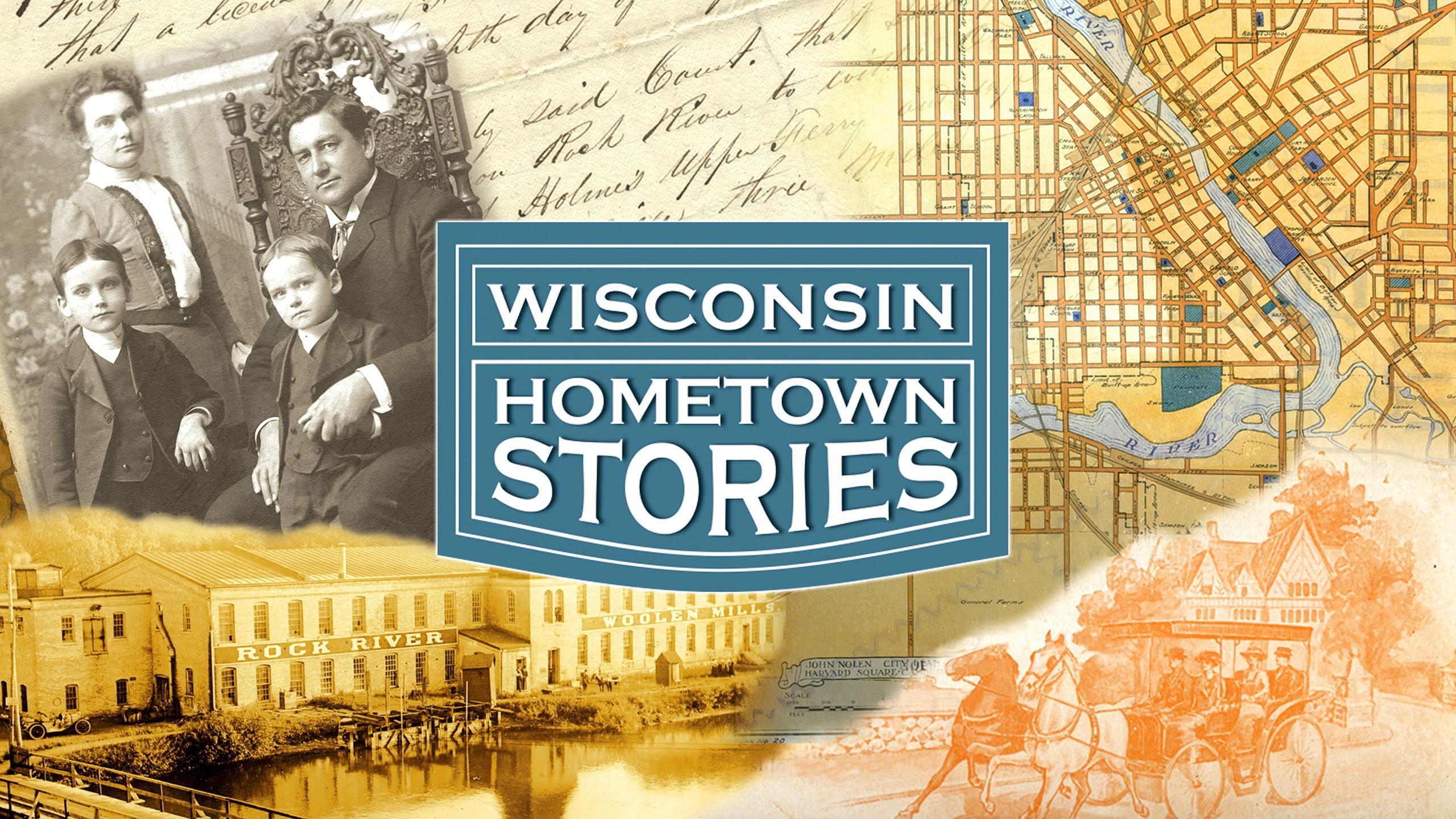Instruments of the Orchestra, a program for elementary and junior high school pupils presented by the Wisconsin School of the Air.
Your teacher is Professor Richard C. Church and Doctor of the University of Wisconsin Symphony Orchestra.
Hello boys and girls.
I wonder how many of you know the name of this instrument that I was playing on just now.
What is it?
The violin, that’s right.
Now tell me what family of instruments it belongs to.
The string family.
We’ve talked quite a bit about families of the instruments of the Orchestra, haven’t we, in the last few programs.
We’ve learned that there are four main families of instruments in the Symphony Orchestra.
And we’ve learned that the conductor uses a musical score that has in it all the parts to be played by the various instruments.
Let’s take a look at this big picture of an orchestra conductor’s score and another look at these four families.
At the top of the score we have the woodwinds.
And that includes the flutes and the obos, the clarinets and the bassoon.
Then we have the brasses, the French horn, trumpets, trombones and tuba.
And then the percussion family.
You remember that on our last program we talked about the percussion instruments.
Now we’re ready to talk about the strings.
The violins, violas, the alone chalos and the bass violes.
On our first program we had a look at all of these string instruments.
Well that was quite a while ago wasn’t it.
I think it would be a good idea if we had another quick look at them.
This one here is a viola.
Now as you can see it’s larger than the violin and so it’s going to have a deeper sound.
This next one is a lot larger than a violin.
Its name is the violon chalos.
And because it’s larger it’ll have a much lower sound.
The next one over here is the biggest of all of the string instruments and its name is the bass viol.
And it will have the very lowest sound of all of the string instruments.
Well now why do you suppose we call this a string family?
Well it’s because the vibrations which make us hear a sound are produced by strings.
Let’s take a close look at this violin back here.
Here you see the four strings.
They’re fastened down at this end and then they cross over this bridge and go up along this fingerboard and right over this saddle up here.
These four pegs are for tuning the strings.
The more you tighten the strings the higher the sound.
If you tighten it too much while the string breaks so we’re careful not to tighten them too much just right to make the open strings and tune.
The violin is a very beautiful looking instrument.
Notice how graceful this scroll up here is.
And notice these two holes that have been cut very carefully in the top of the instrument to make it sound better.
They’re called the F holes because this one looks like a very graceful letter F. All of the string instruments are made of wood.
One kind of wood is used for the top of the instrument and another kind of wood is used for the back of the instrument to give the finest quality of the instrument.
The finest quality of tone possible.
The exact shape of the violin makes a great difference in its tone quality also.
I think it’s very interesting to realize that this shape for the violin was developed a hundred years and more before the revolutionary war.
And no one has been able to improve on it since that time.
Well let’s hear what these open strings sound like, shall we?
[Bell] I wonder how we could play the rest of the notes in that tune.
Well let’s see.
We know that the vibration of the strings produces the sound.
And when we play on an open string the string vibrates from this bridge up here to this saddle.
Now if I place a finger firmly on the string that’s going to make the vibrating part of the string shorter.
You see my finger here is going to stop the vibration just the same as the saddle does up here.
So the string will vibrate from the bridge up to whatever finger I put down.
Now when I put down a finger and make the vibrating part of the string shorter is that going to make the sound lower or is it going to make it higher?
Well now let’s think about that a minute.
When we were talking about the woodwind instruments, do you remember?
We found that the piccolo and the flute had higher sounds than the big bassoon.
And when we talked about the brasses we learned that the trumpet had a higher sound than the big cuba.
So what do you think will happen when we make the vibrating part of the string shorter?
Well it’s going to make the sound higher, isn’t it?
Let’s see if it works that way.
[Bell] You see as I shorten the string the sound got higher.
Now if I pick up those fingers then the sound will be lower again, won’t it?
[Bell] Now I think we could finish that little tune I started to play.
[Bell] If I put one finger down after the other and change from one string to the next one at the right time I can do this.
[Bell] So I’ve run out of fingers.
Do you suppose I can play any higher on the violin?
Yes I can if I shift the position of my whole hand up here like this and I can start over using the fingers again.
[Bell] As you can hear the violin can play very high notes and we’ve learned now that when the string vibrates at a shorter length that makes the fit higher.
Well now that works the same way on all of the string instruments but what makes these strings vibrates?
Well I wonder how many of you know what the name of this thing that I have here is.
This is called a bowl.
Now I imagine one of you think of the word bowl you think of the kind of bowl that you use to shoot an arrow with.
Don’t you?
Well actually originally the bowls that were used to play string instruments were just like a hundred bowls.
But this shape was developed all about about 50 years before the civil war and this is now the modern shape of the bowl.
This stick is made of wood but if you didn’t know what this white stuff here is you might have a hard time guessing because it’s made of hair from the tails of horses.
It’s a fasten up here at this end and then it has a screw mechanism down here to tighten it when we want to or to loosen the hair.
Now when you girls get all dressed up you sometimes like to have your hair wavy or curly don’t you?
Well this hair has to be combed out nice and straight.
Well I think it’s about time we heard some music played by a good violinist and we have a guest here today who is going to play for you.
His name is Joseph Schullhard.
Now well while Joe is playing you watch how he puts his fingers down to shorten the string length and change the sound and watch how he uses the bowl to make the strings vibrate.
He’s going to play some gypsy music called “Charles.”
[Music] Thank you very much.
Joe went to high school in Springfield, Missouri and now he’s a member of the University of Wisconsin Symphony Orchestra.
His accompanist is Janis Wickey.
In addition to being a piano player she’s an excellent cello player and she also plays in the orchestra.
Did you notice that while Joe was playing his hand was waving back and forth like that part of the time?
Now why do you think he did that?
Well that’s to make the sound much more beautiful than it would be if he didn’t do it.
There’s a special name for that that I’d like to have you learn today.
It’s called “The Brottle.”
Now all good singers have a natural vibrato which makes their voices sound warmer and more appealing than they would be if they didn’t have it.
And so when a violinist plays a melody he uses a vibrato to make it sound more like singing.
The other instruments in the Symphony Orchestra use a vibrato sometimes too when they want to make their music more song-like.
There’s another effect that’s used on the string instrument sometimes that I’m going to tell you about for just a moment.
Sometimes you pluck the string with your finger instead of using the bowl.
And the name for that is “Pizzicato.”
Sounds like this.
[music] “Pizzicato.”
Well now whether you play “Pizzicato” or whether you play with the bowl the violin is one of the very finest instruments that you could possibly learn to play.
If you practice faithfully and get to be good you’ll have plenty of chances to play in a Symphony Orchestra because it takes lots of violin to make a Symphony Orchestra sound the way it should.
Next time we’re going to talk more about the instruments of the string family, the viola and the violon cello.
See you then.
Goodbye.
[music] This has been instruments of the orchestra, a program for elementary and junior high school pupils.
Your teacher is Professor Richard C. Church, conductor of the University Symphony Orchestra.
This has been a Wisconsin School of the Air presentation.
[music]
Search Episodes

Donate to sign up. Activate and sign in to Passport. It's that easy to help PBS Wisconsin serve your community through media that educates, inspires, and entertains.
Make your membership gift today
Only for new users: Activate Passport using your code or email address
Already a member?
Look up my account
Need some help? Go to FAQ or visit PBS Passport Help
Need help accessing PBS Wisconsin anywhere?

Online Access | Platform & Device Access | Cable or Satellite Access | Over-The-Air Access
Visit Access Guide
Need help accessing PBS Wisconsin anywhere?

Visit Our
Live TV Access Guide
Online AccessPlatform & Device Access
Cable or Satellite Access
Over-The-Air Access
Visit Access Guide
 Passport
Passport






Follow Us